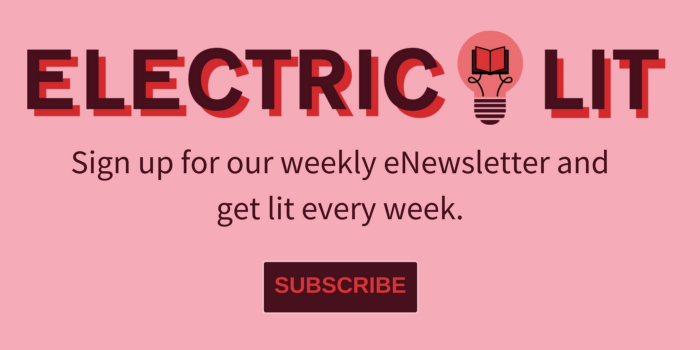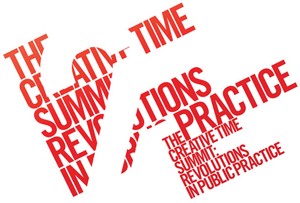news
CREATIVE TIME, Episode 1
I

I spent the day yesterday in Cooper Union’s Great Hall for the first day of the second annual Creative Time Summit. This year’s summit, curated by Creative Time’s Nato Thompson and organized into panels with titles like Markets, Schools, Food, Governments, Institutions, Geographies, and Plausible Art Worlds, as well as global regional reports on socially engaged art practice, features over 40 artists, curators, thinkers, and cultural producers.
While it might seem nearly impossible to squeeze so many speakers into just two days of presentations, which also included the presentation of the Leonore Annenberg Prize for Art and Social Change, Thompson and the Creative Time crew run a tight ship. Keynotes get fifteen minutes, and presenters get eight minutes, to share information about projects, ideas, and organizations making a difference. Musicians for each session watch the countdown clock, tactfully (and often playfully) giving presenters a one-minute warning, and then cutting them off when time is up. The results? Rapid-fire, engaging presentations, humor, and concision.
As curator Nato Thompson pointed out in his opening remarks, artists are often excluded from “serious” discourses about activism, and they’re often accused of “preaching to the choir” when it comes to the audiences they reach. But who, Thompson asked, is the choir? His thought — we’re preaching to a choir that has yet to emerge or define itself.
The first day’s presentations were all, in some fashion, searching for who the choir might be, or where that group might come from. I think that, without explicitly saying so, they revealed that the choir is emergent and shifting. Now’s the time to get a word in on who the choir will be. On the Food panel, representatives for F.E.A.S.T. described their work as serving “the new us,” a group of creatives who are learning to support ourselves in a wide variety of ways, including financially, outside the traditional system of arts funding.
Of course, the new us, as an audience member suggested, relates directly to who the old us was. Just as artists struggle with who to engage with their publicly oriented practices, summit presenters — not all of whom identify their work as strictly artistic — struggled all day with questions about inclusion, justice, and oppression that bubbled beneath the surface, occasionally breaking through in questions about audience and place. Regional reports from curators Gridthya Gaweewong and Sofia Hernandez Chong Cuy pointed to a global matrix of artists challenging power structures.
The strongest response, though, to the critique of socially-engaged art as disconnected from underprivileged communities, was the work of Annenberg Prize recipient Rick Lowe. His ongoing work on Project Row Houses in Houston is a life’s work. By integrating housing, food, healthcare, education, and the arts, and providing essential support and services for people in Houston’s Third Ward, Lowe has effectively modeled how artists — and the arts — can serve, in very real and material ways, the needs of communities, even if they are not traditional arts producers and patrons.
I am excited that Creative Time is honoring the work of an artist whose project intentionally and actively extends itself beyond gallery or academy, and even beyond the alternative galleries and academies that many of the artists at the summit are working to build. While all of the summit’s presenters are thinking and working on shifting given notions of power and privilege in the art world, and experiencing varying degrees of success and scope, I was struck by how difficult it still is to talk about issues of privilege, even for artists working towards democratizing education.
Nevertheless, one of the most brilliant parts of the Creative Time Summit is the way that topics and individual presenters are arranged to connect issues across practices, media, and generations. I was impressed by the balance between theory, practice, and vision. It’s inspiring to see an effort made toward integrating leadership and research, both conceptual and concrete.
The Creative Time Summit day two is sold out. Watch day two’s livestream here, Sunday 10/10, from 10 AM to 6 PM: http://creativetime.org/programs/archive/2010/summit/WP/
Day One’s video archive is available there, as well.
–Cayden Mak is a Buffalo-based cyborg, educator, game designer, and theorist.









